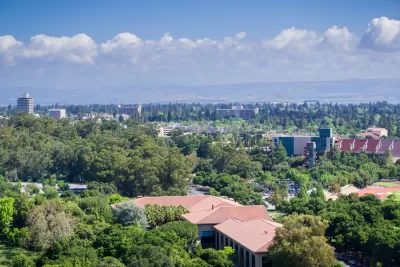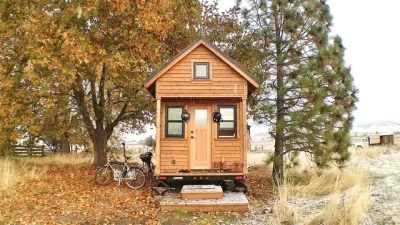Palo Alto has become so expensive, plots of land with derelict houses sell for millions of dollars. Mathew Yglesias argues allowing small municipalities to make their own zoning laws is partly to blame.

NIMBYs in California's most expensive town are destructive to the state's economy, and Mathew Yglesias argues the state should take away their power to decide zoning rules by giving the state more power over zoning. "In the normal course of events, one might expect that land this expensive would become densely developed. But it turns out that the neighborhood in question isn’t full of large apartment towers," Yglesias writes in Vox. This is because the land is set aside for detached single family homes and nothing else can be built there.
In the interest of housing, more people and helping the state's economy, Yglesias argues that the state of California should intercede. "Stepping in to centralize more land use decisions in Sacramento would reveal that there is a strong broad statewide interest in more development," Yglesias argues. Streamlining the permitting process or allowing for more density in places like Palo Alto would bring down the value of some of the empty lots, but "housing affordability has become a problem that afflicts large swathes of the middle class," and Yglesias argues, the state needs to address that.
FULL STORY: This $2.5 million Palo Alto teardown shows how coastal housing policy has gone wrong

Planetizen Federal Action Tracker
A weekly monitor of how Trump’s orders and actions are impacting planners and planning in America.

Maui's Vacation Rental Debate Turns Ugly
Verbal attacks, misinformation campaigns and fistfights plague a high-stakes debate to convert thousands of vacation rentals into long-term housing.

San Francisco Suspends Traffic Calming Amidst Record Deaths
Citing “a challenging fiscal landscape,” the city will cease the program on the heels of 42 traffic deaths, including 24 pedestrians.

Amtrak Rolls Out New Orleans to Alabama “Mardi Gras” Train
The new service will operate morning and evening departures between Mobile and New Orleans.

The Subversive Car-Free Guide to Trump's Great American Road Trip
Car-free ways to access Chicagoland’s best tourist attractions.

San Antonio and Austin are Fusing Into one Massive Megaregion
The region spanning the two central Texas cities is growing fast, posing challenges for local infrastructure and water supplies.
Urban Design for Planners 1: Software Tools
This six-course series explores essential urban design concepts using open source software and equips planners with the tools they need to participate fully in the urban design process.
Planning for Universal Design
Learn the tools for implementing Universal Design in planning regulations.
Heyer Gruel & Associates PA
JM Goldson LLC
Custer County Colorado
City of Camden Redevelopment Agency
City of Astoria
Transportation Research & Education Center (TREC) at Portland State University
Jefferson Parish Government
Camden Redevelopment Agency
City of Claremont





























